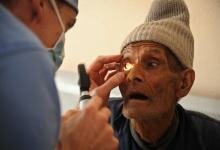Separate Toilets for Schoolgirls
Are latrines for girls a justifiable investment?
 Nepal is investing US$15 million to build separate toilets for female public school students in an effort, the government says, to reduce the number of girls missing classes or dropping out because of the lack of private changing facilities during menstrual cycles - despite a recent study suggesting menstruation has very little to do with why girls attend school less regularly than boys.
Nepal is investing US$15 million to build separate toilets for female public school students in an effort, the government says, to reduce the number of girls missing classes or dropping out because of the lack of private changing facilities during menstrual cycles - despite a recent study suggesting menstruation has very little to do with why girls attend school less regularly than boys.
The government believes that apart from providing more privacy, the new toilets will also boost sanitation and health generally. The scheme is due to start in April, education officials said.
“This is certainly great news for Nepali girls because the lack of separate toilets has always been a grossly neglected issue,” said education specialist Helen Sherpa from international NGO World Education.
But Emily Oster, one of the principal authors of a study in Nepal of the impact of menstruation on school attendance, is not convinced. “As far as we know, there is no quantitative evidence of the impact of separate toilets on girls' schooling… what we can say based on our paper is that menstruation has only a very tiny impact on schooling for girls.”
The 2010 study entitled Menstruation, Sanitary Products and School Attendance: Evidence from a Randomized Evaluation, by researchers from the US universities of Michigan and Chicago - based on a survey of 198 schoolgirls - found through randomized trials (comparing girls with and without amenities) that there was little relationship between menstruation and girls’ school attendance.
Frequently used in scientific research, randomized trials are increasingly used to test the efficacy of development interventions.
Oster explained that while some studies have shown girls in schools with separate toilets are more likely to attend, it is difficult to establish causality. She also said distributing improved sanitary products to menstruating girls would not have any significant impact on girls’ schooling either.
“This suggests that the claims made by NGOs, the UN, the World Bank, etc, overstate the importance of sanitary products,” said Oster.
Chandan Sapkota, a researcher at South Asia Watch on Trade, Economics & Environment in Kathmandu, says in his blog: “The bottom line is while policies to provide better sanitary products in the developing world may have positive value, we should not expect them to impact schooling.”
"Top priority"
The girl students have bigger problems than menstruation affecting their studies or class attendance, like helping their parents in household chores.
"The girl students have bigger problems than menstruation affecting their studies or class attendance, like helping their parents in household chores," said Bed Prasad Kaju, headmaster of Sanjewani Model High School, a state school in Dhulikhel Municipality, 20km north of Kathmandu. He said his school did not have enough toilets but more than 50 percent of his 1,100 students were girls. They attended regularly and their achievements matched those of the boys, he added.
Officials estimate most of the country’s 28,000 state secondary schools lack girls’ toilets.
In the few secondary schools that do have designated girls’ toilets, at least 250 girls are forced to use one latrine, causing queues that eat into school time and affect performance, said Sherpa.
The government’s aim is to boost literacy rates, which currently stand at 44.2 %for women and 67.7 % for men, according to the Department of Education. “We are making this our top priority for this year,” said senior official Lekhnath Poudel from the Ministry of Education.
The scheme plans to install separate girls’ toilets in 5,500 secondary schools by the end of 2011, and in all secondary schools by 2014-15, said Khagaraj Baral, director of planning at the Department of Education, who hopes the move will get more girls into the classroom, and keep them there.
This post was first published in IRIN in March 2011.


















